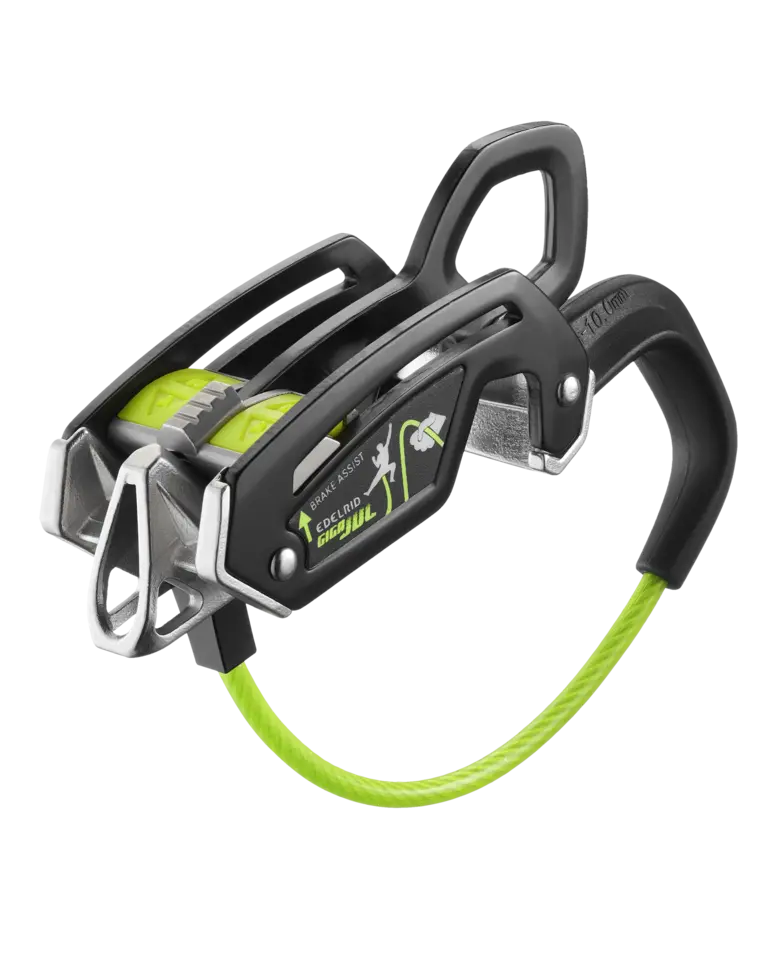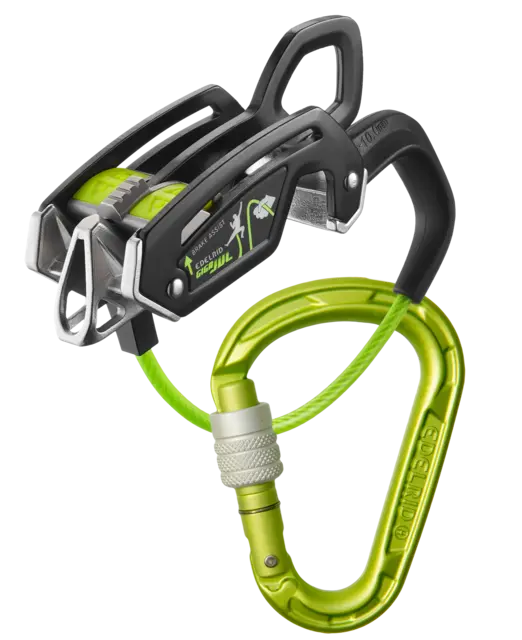What is assisted braking guide mode?
Added safety! In principle, a so-called assisted braking tuber works exactly like normal tubular belay devices, even if the shape does not always suggest it.
These devices have a mechanism which, in the event of a fall, creates such strong friction that the rope can no longer run through. Therefore catching a fall is less dependent on the belayer's manual force. Assisted braking tubers offer significantly higher safety reserves than standard tubers. However, it is vital to always follow the manufacturer's instructions regarding the carabiners to be used and the permitted rope diameter. The extremely high braking performance can only be guaranteed if the correct rope diameter is used. The thicker the rope, the greater the friction generated and thus the effective braking of the rope. Nevertheless, the brake-side hand principle must of course also be adhered to when using an assisted braking tuber. It should be noted that due to the enormously high braking performance of the assisted braking tuber on the rope, a dynamic belaying technique should always be utilized. As suggested by the EN 15151-2 standard, our assisted braking tubers are also tested as manual braking devices. However, this is not mandatory and each manufacturer has its own policy on this issue.
Advantages:
- Very high safety reserves due to higher braking performance
- Less hand braking force required
- Intuitive to use
- Allows quickly giving slack
- Suitable for use with half ropes and twin ropes (depending on model)
- Minimal kinks in rope
Disadvantages:
- Dynamic belaying only possible via body dynamics
- Handling requires practice
What is the guide mode?
According to the German Alpine Club (DAV), standard tubers are now by far the most used belay devices. All EDELRID tubular belay devices confrom to the stipulated values in the EN 15151-2 standard. Even today, standard tubers basically correspond to the original Sticht plate. Many climbers still talk about belay plates when using tubular devices. The braking performance works on the double-bend principle. The rope is thus bent twice: once around the carabiner and once downwards on the device. Friction increases the braking performance to the extent that a belayer can manually arrest a fall. However, in a tubular belay device the brake performance increase only works if the brake-side of the rope is held downwards and therefore the second bend is created. A misuse of the device can be extremely dangerous with drastic consequences. If the brake-side of the rope is released or held above or in front of the tuber, the belayer has hardly any chance of holding the rope in the event of a fall and can no longer prevent the lead climber from falling to the ground...
The big advantage of standard tubers is that they are dynamic. This means that a section of the rope is still running through the device until the fall is compeletely arrested. With a little practice, it is therefore possible to belay very dynamically with standard tubers.
This means if the lead climber falls, they will do so more softly. In addition, these devices allow quick paying out and quickly taking up slack.
Advantages:
- Universal application (depending on model)—belaying a leader, bringing up a second, body belay
- Optimal dynamic belaying
- Easy to use
- Minimal kinks in rope
- Lightweight
- Perfect for abseiling with single and double ropes
- Does not damage rope
Disadvantages:
- Does not block automatically (belaying error can have fatal consequences)
- Braking performance affected by rope diameter—and condition
- Certain devices have less braking performance/ require greater braking hand force
















